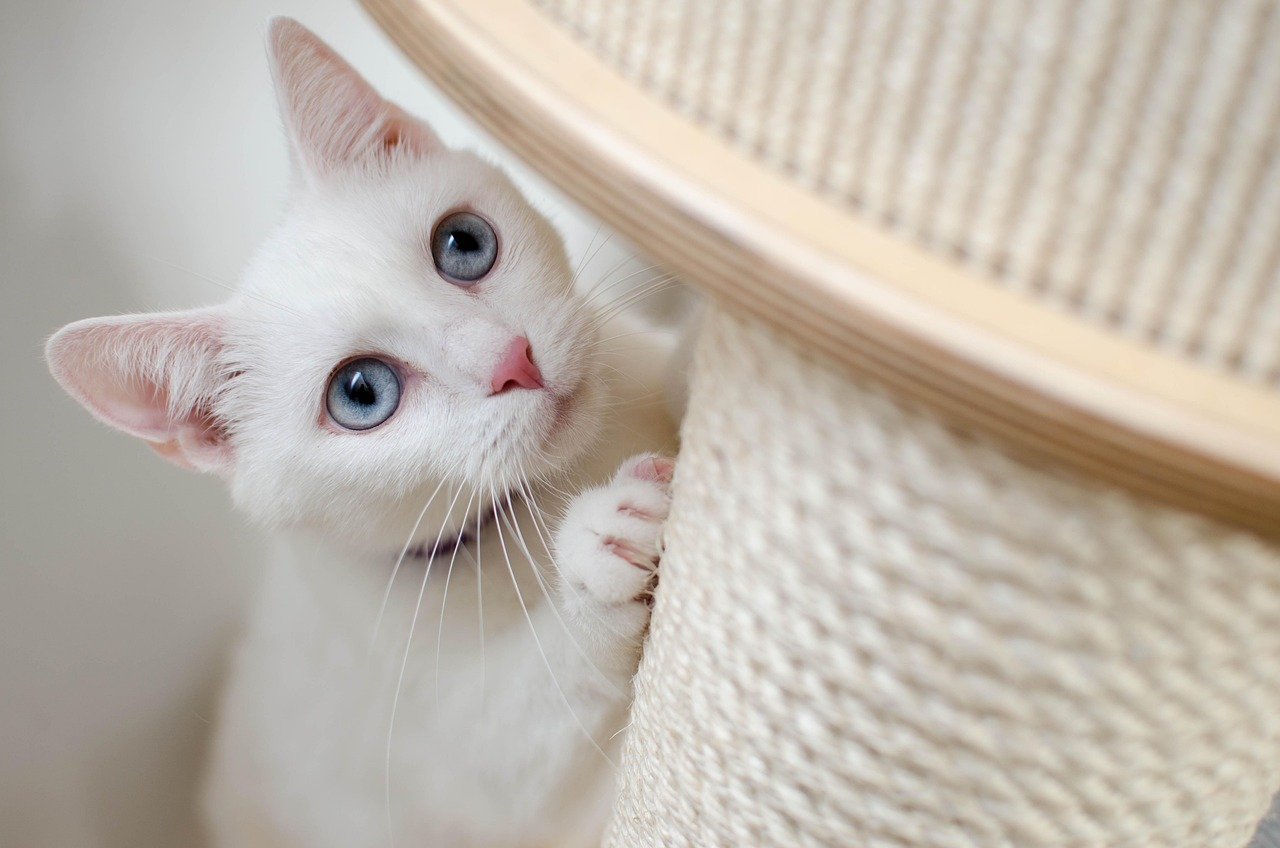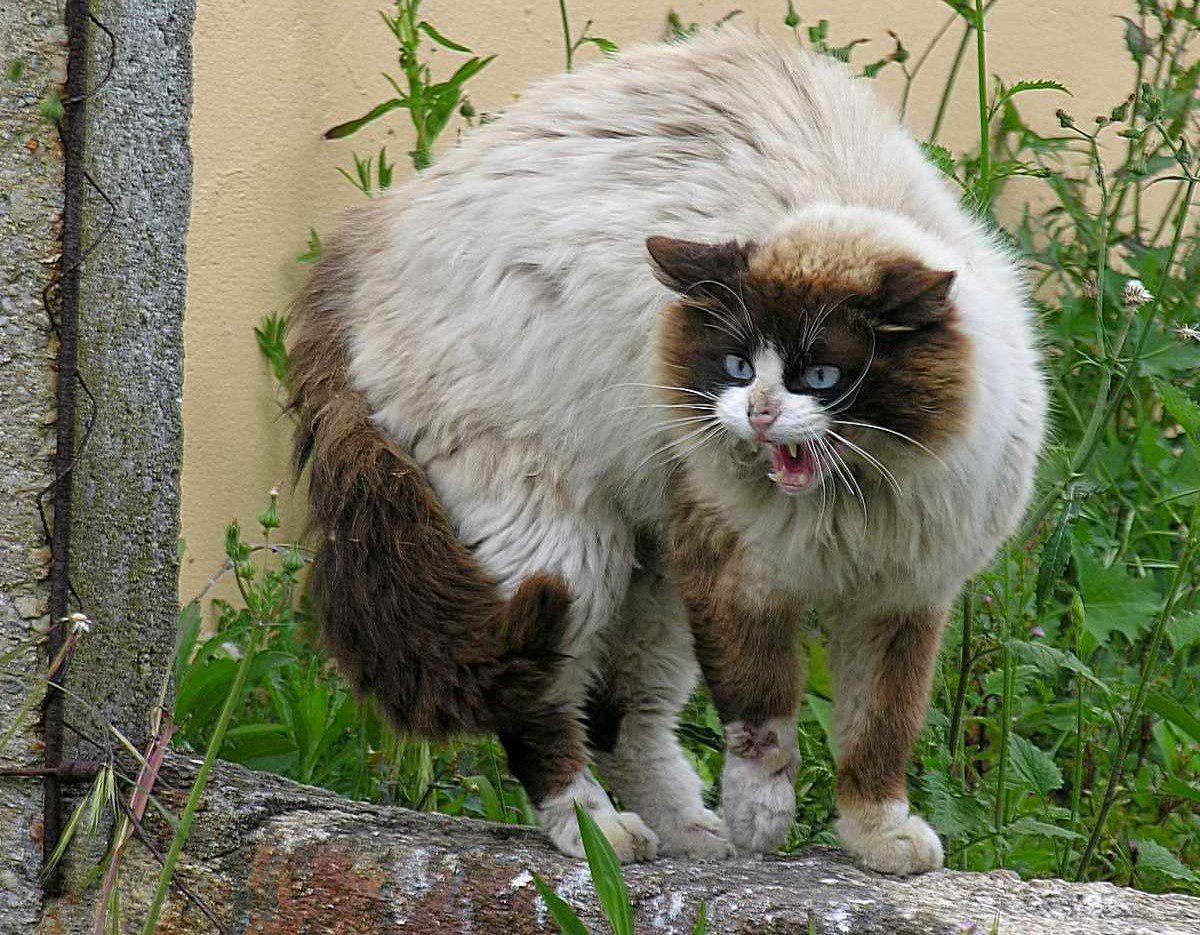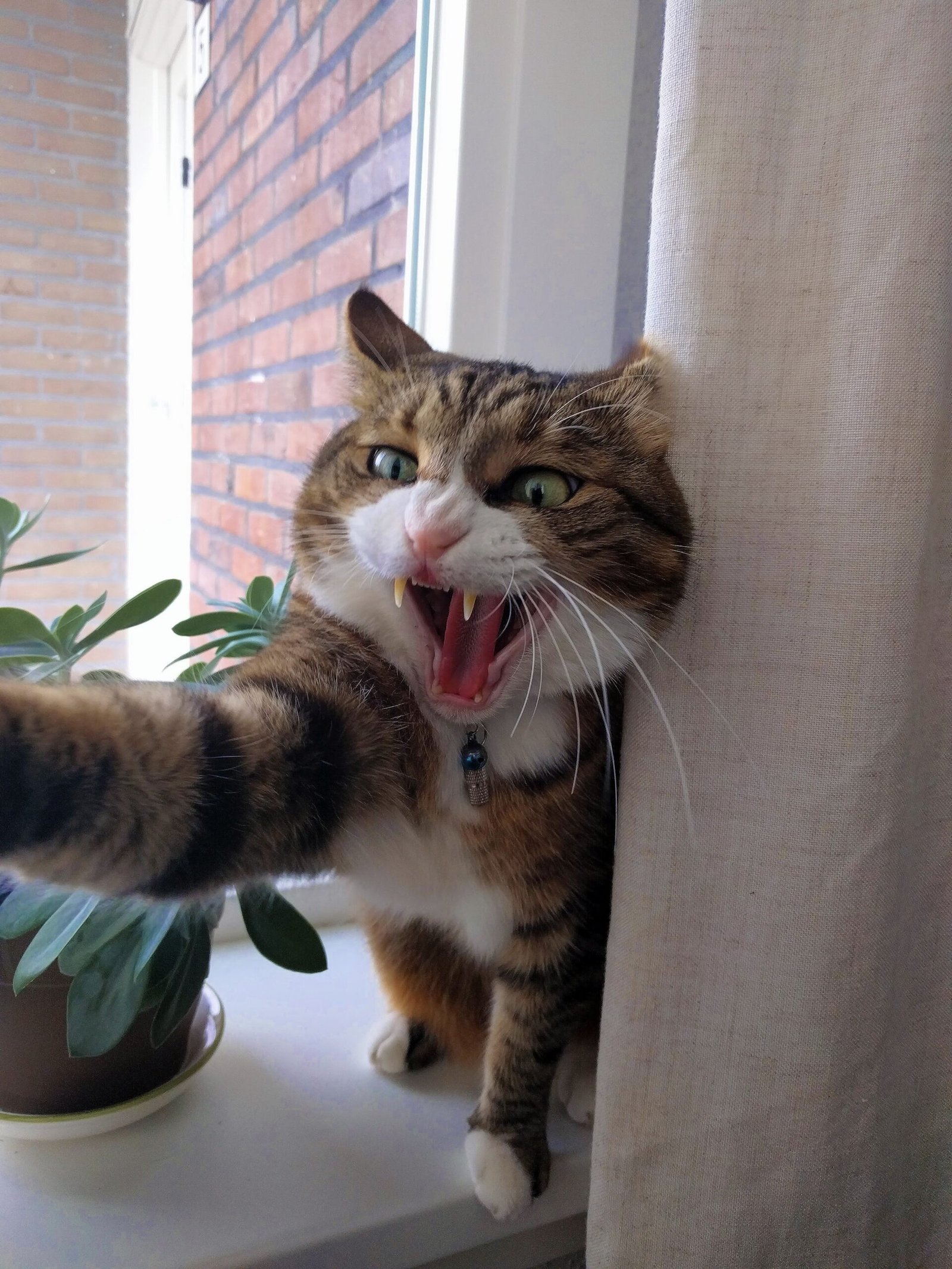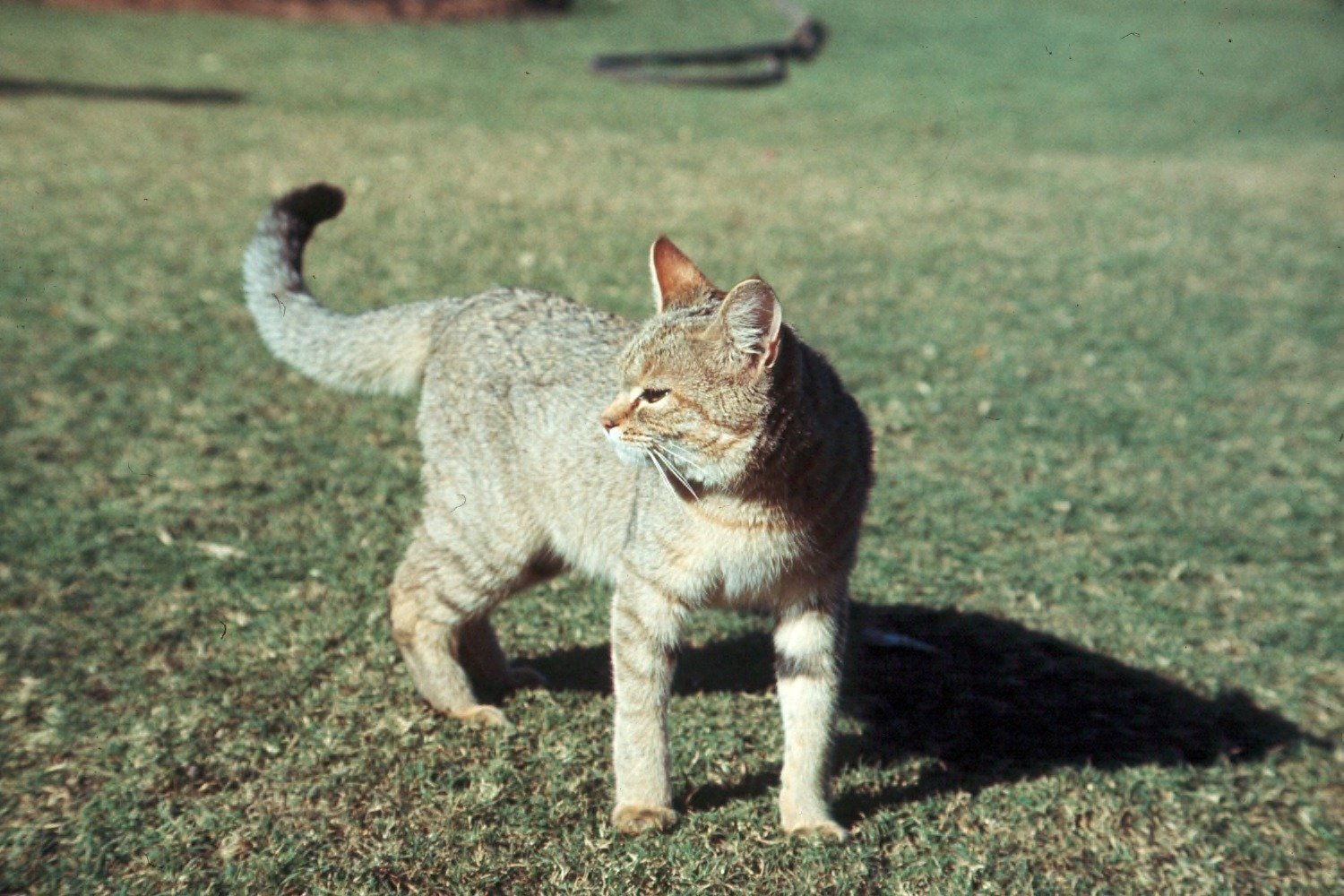Sudden aggression in cats can be both alarming and perplexing. One moment your feline friend is purring on your lap, and the next, they’re hissing and swatting. Understanding the reasons behind this behavior is crucial for maintaining a harmonious relationship with your pet. Cats, like humans, can exhibit sudden changes in behavior for various reasons. From health issues to changes in their environment, many factors can trigger aggression. Let’s dive into the potential causes and how you can address them.
Understanding Cat Behavior Basics
Cats are unique creatures with behaviors that can sometimes baffle even the most experienced pet owners. They communicate primarily through body language, vocalizations, and scent. Recognizing these signals can help you better understand your cat’s state of mind. For instance, a cat with flattened ears and a twitching tail might be feeling threatened or anxious. It’s essential to recognize these signs early to prevent escalation. Moreover, every cat is an individual, and what might be normal behavior for one might be unusual for another. By observing and learning your cat’s specific behaviors, you can better understand when something is amiss.
Medical Issues: The Invisible Culprits
Health problems are a common cause of sudden aggression in cats. Pain or discomfort can make even the gentlest feline lash out unexpectedly. Conditions such as arthritis, dental disease, or urinary tract infections can cause significant distress. Regular veterinary check-ups are vital to rule out any underlying medical issues. If your cat suddenly becomes aggressive, it’s wise to consult a veterinarian to ensure there’s no health problem causing their behavior. Remember, cats are experts at hiding pain, so subtle changes in behavior might be the only indicators.
Environmental Changes and Stress
Cats are creatures of habit, and any change in their environment can be unsettling. Whether it’s moving to a new home, introducing a new pet, or even rearranging furniture, these changes can lead to stress-induced aggression. Creating a stable environment with familiar scents and routines can help reduce stress. Providing safe spaces where your cat can retreat and feel secure is also beneficial. If you’ve recently made changes to your home, try to introduce them gradually to give your cat time to adjust.
Fear and Anxiety: Common Triggers

Fear is a powerful motivator for aggression in cats. If a cat feels cornered or threatened, they might react aggressively to defend themselves. This could be due to loud noises, unfamiliar people, or even other animals. Recognizing the signs of fear, such as dilated pupils or a puffed-up tail, can help in managing the situation. Providing a safe and quiet environment can alleviate anxiety. It’s essential to approach a fearful cat calmly and give them space until they feel secure again.
Resource Guarding: A Protective Instinct

Cats can be territorial creatures, and resource guarding is a behavior where they protect their food, toys, or even people. This protective instinct can lead to aggression if they feel their resources are threatened. Ensuring that your cat has enough resources, such as food bowls, litter boxes, and toys, can help reduce this behavior. If you have multiple cats, providing separate resources for each can prevent competition and aggression. Observing your cat’s behavior around their resources can give clues to potential triggers.
Redirected Aggression: Misplaced Frustration
Redirected aggression occurs when a cat is unable to reach the source of their frustration and takes it out on the nearest target. This could be another pet, a person, or even an object. For example, if a cat sees another animal outside the window but cannot reach it, they might redirect their aggression towards a nearby person or pet. Identifying and removing the source of frustration can help manage this behavior. It’s also crucial to provide outlets for their energy, such as interactive play sessions.
The Role of Socialization
A cat’s early experiences can significantly impact their behavior. Cats that haven’t been properly socialized as kittens might exhibit fear or aggression towards unfamiliar people or situations. Socialization involves exposing kittens to various experiences, people, and other animals in a positive way. If a cat has missed out on this crucial period, they might require more patience and gentle handling. Gradual exposure and positive reinforcement can help build their confidence and reduce aggressive tendencies.
Hormonal Changes and Aggression

Hormonal changes, especially in unneutered cats, can lead to aggressive behavior. Male cats, in particular, might show increased aggression due to testosterone levels. Neutering or spaying can help reduce these hormonal surges and, consequently, aggressive behaviors. It’s not just about reducing aggression; these procedures can also prevent certain health issues and unwanted litters. Discussing with your veterinarian about the best time for these procedures can benefit your cat’s overall well-being.
Understanding Your Cat’s Body Language
Cats communicate a lot through their body language, and understanding these cues can prevent aggressive encounters. A cat with a relaxed posture is usually at ease, while a tense body might indicate stress or aggression. Observing their ears, eyes, and tail can provide insights into their mood. For instance, a cat with dilated pupils and erect ears might be on high alert. By understanding these signals, you can better respond to your cat’s needs and prevent potential aggression.
Play Aggression: Channeling Energy
Kittens and young cats often exhibit play aggression, characterized by stalking, pouncing, and biting. While this behavior is natural, it can sometimes escalate if not addressed. Providing appropriate toys and interactive play sessions can help channel this energy. It’s essential to avoid using your hands or feet as toys, as this can encourage biting. Teaching your cat boundaries during playtime can prevent aggressive behaviors in the future.
Recognizing Overstimulation
Cats can become overstimulated during petting sessions, leading to sudden aggression. What starts as a pleasant interaction can quickly turn if the cat becomes overwhelmed. Signs of overstimulation include twitching tails, flattened ears, and a sudden change in demeanor. It’s crucial to recognize these signs and stop petting before the cat becomes aggressive. Understanding your cat’s tolerance levels can help maintain positive interactions.
Past Trauma and Its Impact
Cats with a history of trauma or abuse might exhibit aggression as a defense mechanism. These experiences can leave lasting impressions, making the cat wary of certain situations or people. Patience and understanding are key when dealing with a traumatized cat. Providing a stable and loving environment can help rebuild their trust. Working with a professional animal behaviorist might also be beneficial in addressing deep-seated fears.
The Influence of Diet on Behavior
A cat’s diet can impact their behavior and energy levels. Nutritional deficiencies or imbalances might contribute to aggressive behaviors. Ensuring your cat has a balanced and nutritious diet can support their overall well-being. Consulting with a veterinarian or pet nutritionist can help determine the best diet for your cat’s needs. Sometimes, simple dietary changes can lead to noticeable improvements in behavior.
Age-Related Behavioral Changes

As cats age, they might experience behavioral changes due to cognitive decline or health issues. Older cats might become more irritable or less tolerant of disturbances. Regular health check-ups can help detect age-related issues early. Providing a comfortable environment and adjusting routines to accommodate their needs can help reduce aggression. Understanding and adapting to these changes can ensure your senior cat remains happy and healthy.
Consulting with a Professional
If you’re struggling to identify the root cause of your cat’s aggression, consulting with a professional can be invaluable. Veterinarians and animal behaviorists have the expertise to assess and address behavioral issues. They can provide tailored advice and strategies to manage and reduce aggression. Seeking professional help can ensure that both you and your cat enjoy a harmonious relationship.
Creating a Safe and Enriching Environment
A safe and enriching environment can significantly reduce aggressive behaviors in cats. Providing vertical spaces, such as cat trees or shelves, allows cats to observe their surroundings from a safe distance. Interactive toys, scratching posts, and regular play sessions can also help channel their energy. Ensuring your cat has access to all their needs can prevent frustration and aggression.
The Power of Positive Reinforcement
Positive reinforcement involves rewarding desired behaviors, encouraging your cat to repeat them. This approach can be effective in managing aggression. Rewarding your cat with treats or affection when they exhibit calm behavior can reinforce positive interactions. It’s essential to be consistent and patient, as behavior change can take time. Over time, your cat will learn which behaviors are rewarded and adjust accordingly.
The Importance of Routine
Cats thrive on routine, and disruptions can lead to stress and aggression. Establishing a consistent daily routine can provide a sense of security for your cat. Regular feeding times, play sessions, and quiet periods can help maintain a balanced environment. By sticking to a routine, you can minimize stress and reduce the likelihood of aggressive behaviors.
Building a Strong Bond with Your Cat
Building a strong bond with your cat can prevent and manage aggressive behaviors. Spending quality time, engaging in interactive play, and providing affection can strengthen your relationship. Understanding your cat’s preferences and respecting their boundaries can also enhance your bond. A strong connection can ensure mutual trust and understanding, reducing the chances of aggression.
Sudden aggression in cats can be a complex issue with multiple underlying causes. By understanding and addressing these factors, you can ensure a harmonious relationship with your feline friend. Regular observation, patience, and professional guidance can help identify and manage the root cause of your cat’s aggressive behavior.
Hi, I’m Bola, a passionate writer and creative strategist with a knack for crafting compelling content that educates, inspires, and connects. Over the years, I’ve honed my skills across various writing fields, including content creation, copywriting, online course development, and video scriptwriting.
When I’m not at my desk, you’ll find me exploring new ideas, reading books, or brainstorming creative ways to solve challenges. I believe that words have the power to transform, and I’m here to help you leverage that power for success.
Thanks for stopping by, Keep coming to this website to checkout new articles form me. You’d always love it!





